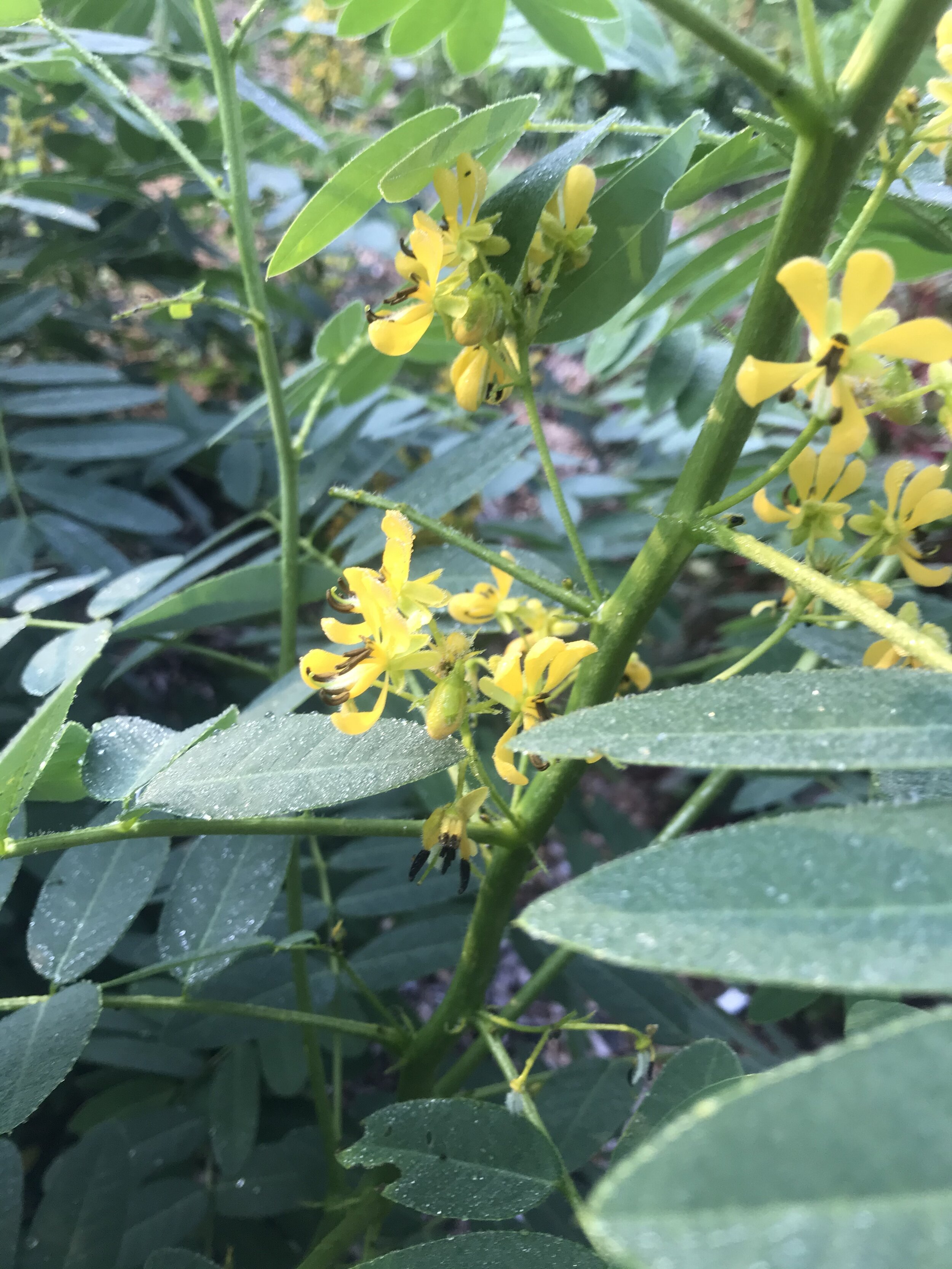Maryland Senna



Maryland Senna
Senna marilandica
Plant for the bright summer yellow, for the butterfly fodder, and for the soil-nourishing companion planting!
Hardy from Zones 4-9. Up to 6 feet tall and 3 feet wide.
Despite the name, Senna can grow lots of places, and grew there long before our arbitrary state lines! Senna is a native perennial shrub that grows throughout the Southeast and up to the Great Lakes Region, often in moist meadows, savannas, glades, and floodplains. It doesn’t mind wet soil or a little disturbance to get established.
Senna springs up with a strong central light-green stem covered in a little peach fuzz, with 10-20 gray-green leaflets on compound leaves that feed at least five species of butterfly caterpillars, including Cloudless Sulphur, Orange-barred Sulphur and Sleep Orange. Leaves have also been used as a laxative (due to a compound called anthraquinone), which seems to deter deer from thoroughly chowing down. Bright yellow flowers burst out each July and August, attracting bees and hummingbirds to the pollen. Interestingly, the flowers don’t produce nectar! Instead, the base of each leaf holds a small gland that oozes sweet nectar for desired bugs like parasitic wasps and ladybugs.
All this makes Senna pretty popular in meadow plantings and native landscape gardens, and because it’s in the Legume family! By late summer Senna sprout long bean-like pods that stay shut throughout winter as feed for quail and turkey (and soaked seeds become a mucilaginous support for sore throats). Some people are uncertain about its nitrogen-fixing ability, and others swear by it, though either way Senna spreads through fibrous rhizomes to hold and build soil. Root poultices have been put on sores and infusions have been used for fever and heart problems, but always wise to check in with trained herbalists.
We’re mixing brilliant Senna into forest gardens of Hazel and Currant as a chop-and-drop mulch, and friends are adding it in silvopasture plantings as a nutritious livestock feed. Just keep in mind those deer-deterring anthraquinones!
We propagate our Senna from seeds saved from riparian orchards.